House Tour: A Stunning Florence Estate Rooted In Family History
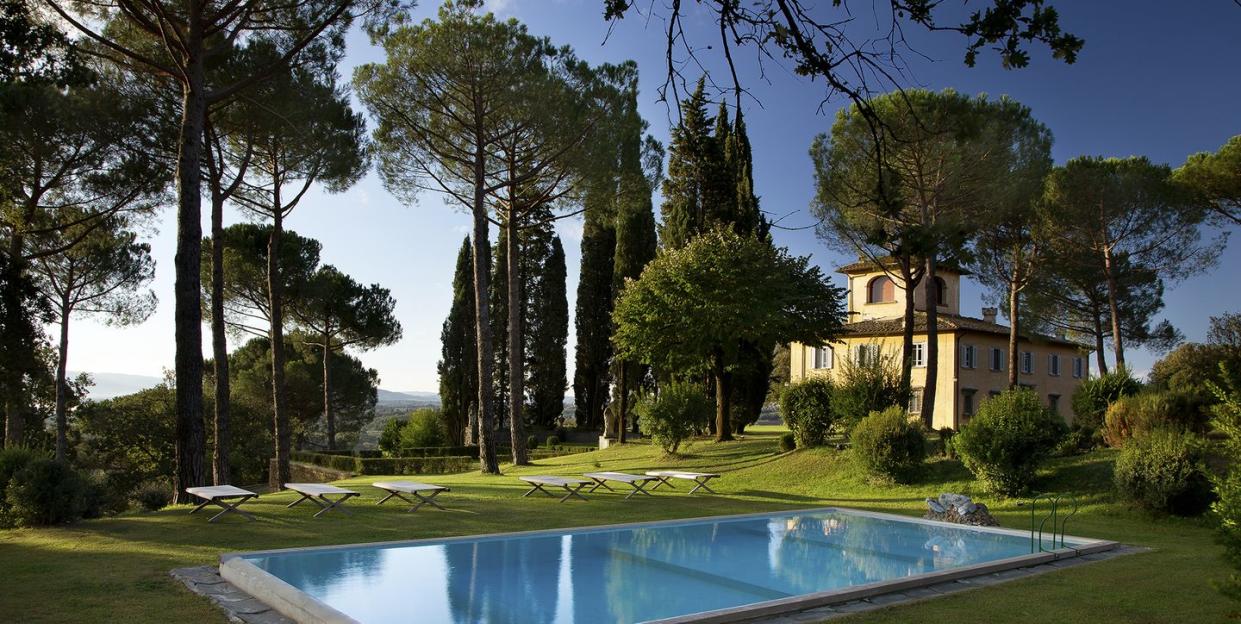
Ever since he was a little boy, Carlo Pallavicino fantasized about owning his grandparents’ Tuscan estate. The ocher-hued villa, most likely built in the 18th century, is situated 1,000 feet above sea level, and its tower (an old dovecote transformed into a lofty living room) offers commanding views of nearby Florence and the emerald-green countryside.
Pallavicino’s grandfather made olive oil from the property’s olive trees, grew Sangiovese grapes for wine, and raised chickens so that his family would always have fresh eggs. Towering evergreen oak trees surround the garden, with a forest of cypress and pine beyond. Pallavicino spent summers there with his two older sisters, and the 32-acre estate remained a giant playground for him after they went off to college and moved away from Florence.
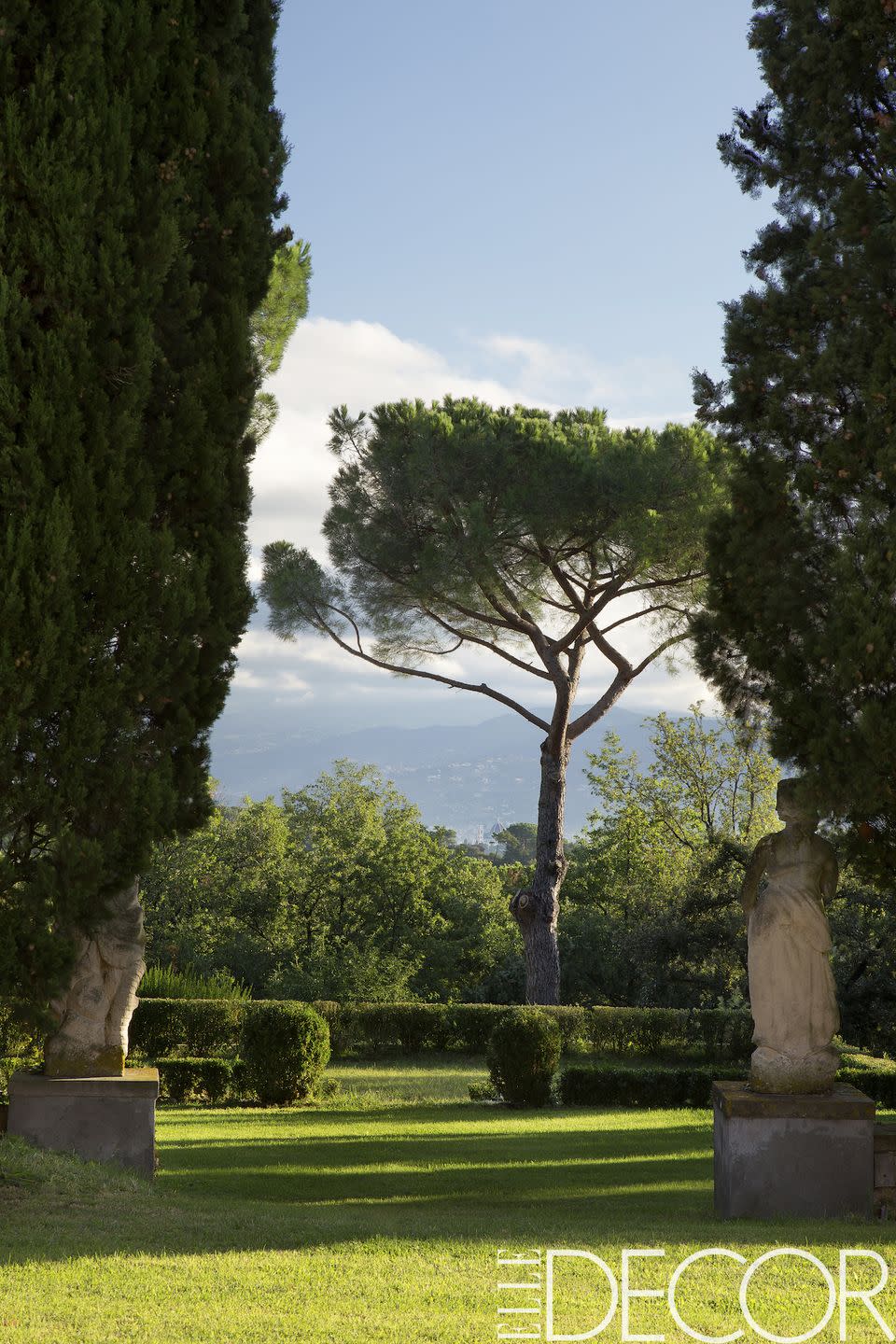
A pair of statues depicting summer and fall frames a view of Florence with the Duomo in the distance.
“The tower could be the most fantastic place,” he remembers thinking. “I imagined I could work up there, with a phone and a computer, in such a marvelous position.”
His mother, Mariella, eventually inherited the property, which is called Villa Tavernaccia, or “tough tavern” — in a former life, it served as a pit stop for bandits — but she preferred city life. So in 2014 Pallavicino, by now one of Italy’s most successful sports agents, representing professional soccer players around the world, finally acquired his dream house. He shares it with his wife, Valentina, and, when they are home, their two children, Assia, who is 22, and Emilio, 19.
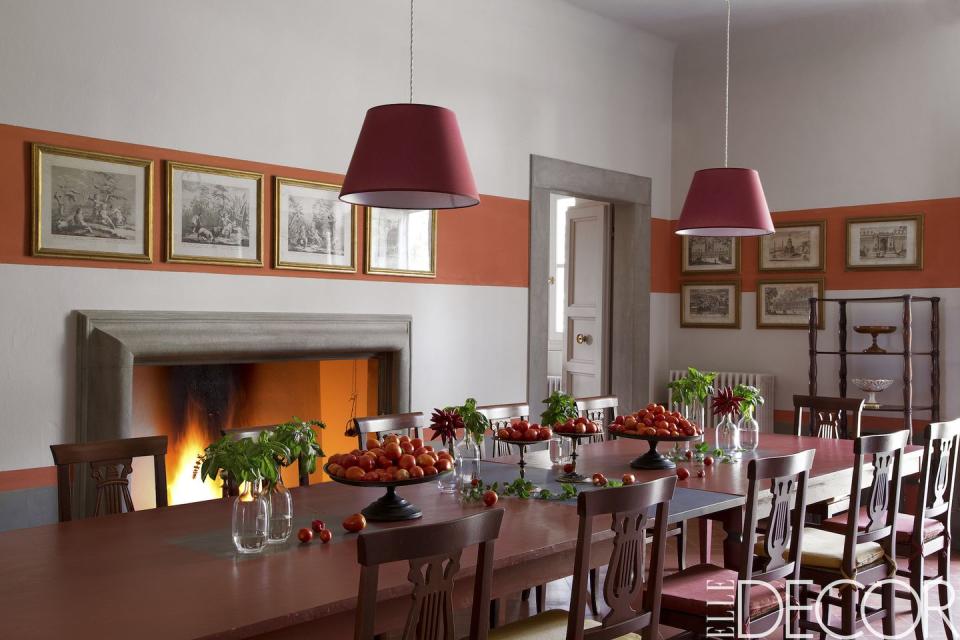
The dining chairs are early-19th-century Tuscan, the pendant lights are a custom design and the 17th- and 18th-century engravings are views of Rome.
The interiors were always charming — overflowing with Napoleon-era neoclassical antiques bought by his grandmother in the Renaissance city of Lucca and refreshed by his mother with chic toiles de Jouy. But the bathrooms and kitchen needed serious updating, and the whole place in general called for a more modern look. Who better, then, to sensitively imbue fresh energy than Pallavicino’s interior-designer sister, Ilaria Miani?
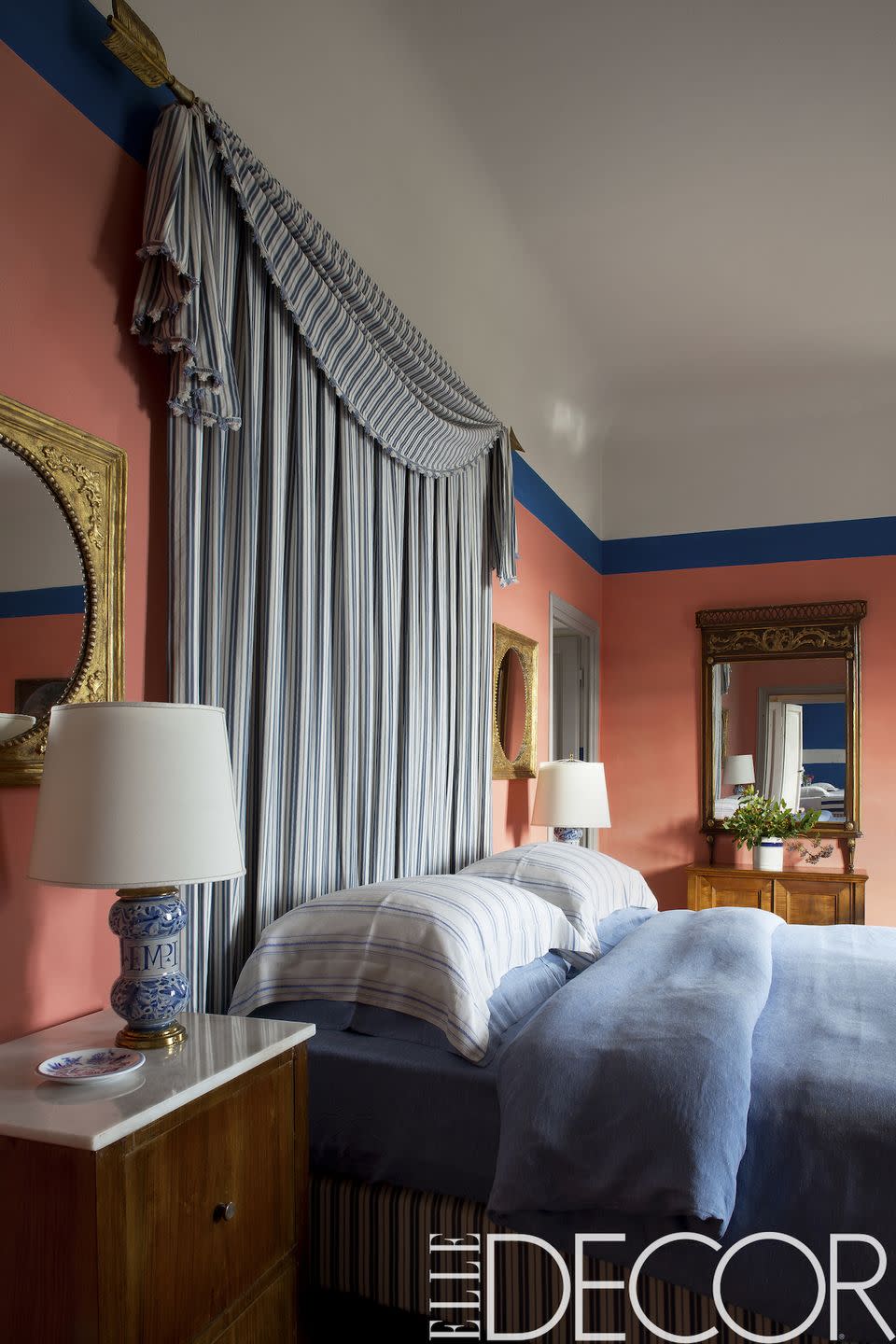
In the master bedroom, the bed coronet and curtains are of an Ian Mankin stripe, the rectangular mirror is late-18th-century Venetian and the walls are painted in custom colors.
“Our grandmother restored the house when she bought it in the 1960s,” says Miani. “It was extremely comfortable, and we didn’t want to change too much. We worked with what was there, and then tried to make everything a bit more theatrical.”
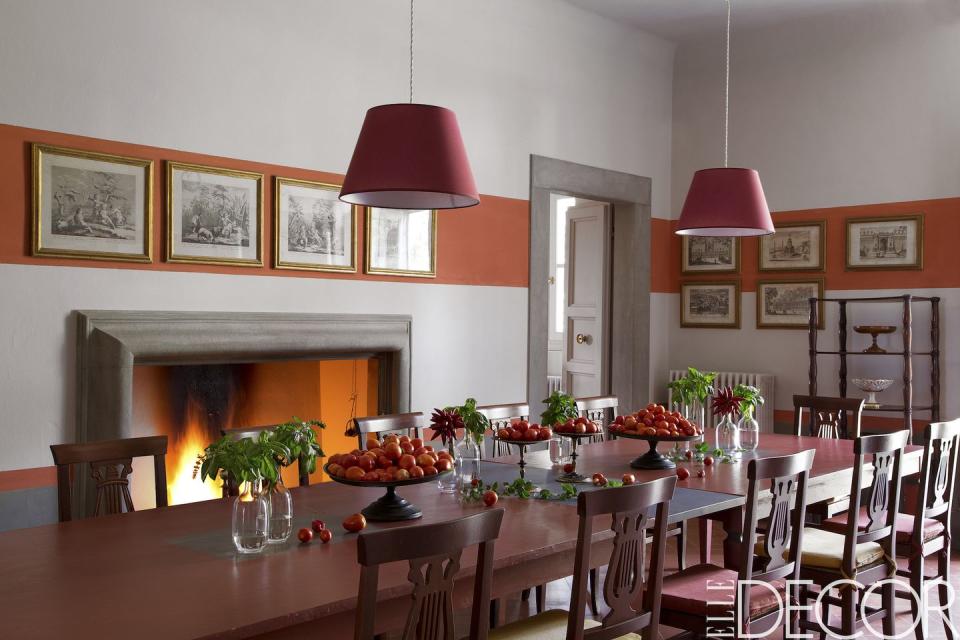
The dining chairs are early-19th century Tuscan, the pendant lights are a custom design and the 17th- and 18th-century engravings are views of Rome.
Miani trained as an art historian and worked in galleries in Milan before branching out into design. She has a knack for infusing warmth and bold drama into historic interiors. For the past 20 years, she has made a career out of reviving faded country houses; her largest project to date is the restoration of a 900-year-old village into a cultural mecca called Monteverdi Tuscany. Her first order of business at Villa Tavernaccia, once the renovations were completed, was to find just the right light gray limewash for the walls to meld with the window surrounds and door frames, all made from the same local sandstone, pietra serena, that is used in Florence’s churches and palaces.
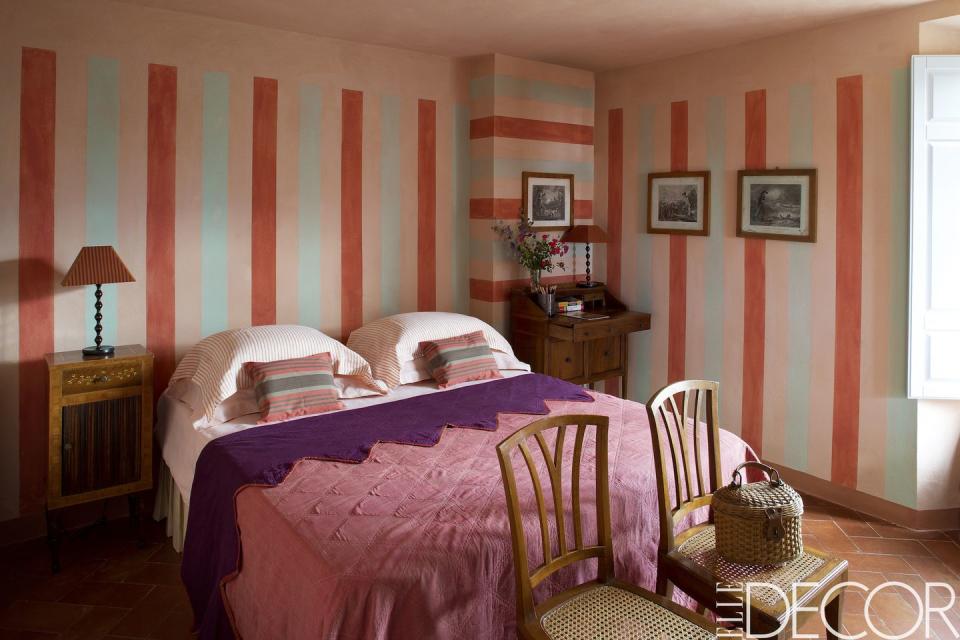
A guest room bed is dressed with a cover in a C&C Milano linen, the Venetian chairs are circa 1800 and the desk is from the late 19th century. The 19th-century French engravings depict hunting scenes and the floor is covered in terra-cotta tile from Impruneta.
For contrast, Miani introduced hand-painted stripes in many rooms: wide and narrow, vertical and horizontal, and in a rainbow of colors, from celery to acid green, apricot to persimmon orange. “The stripes are simple, like a child would do; they have a rhythm,” she says. “We didn’t want it to look too polite. The colors change your mood, like you’re on holiday.”
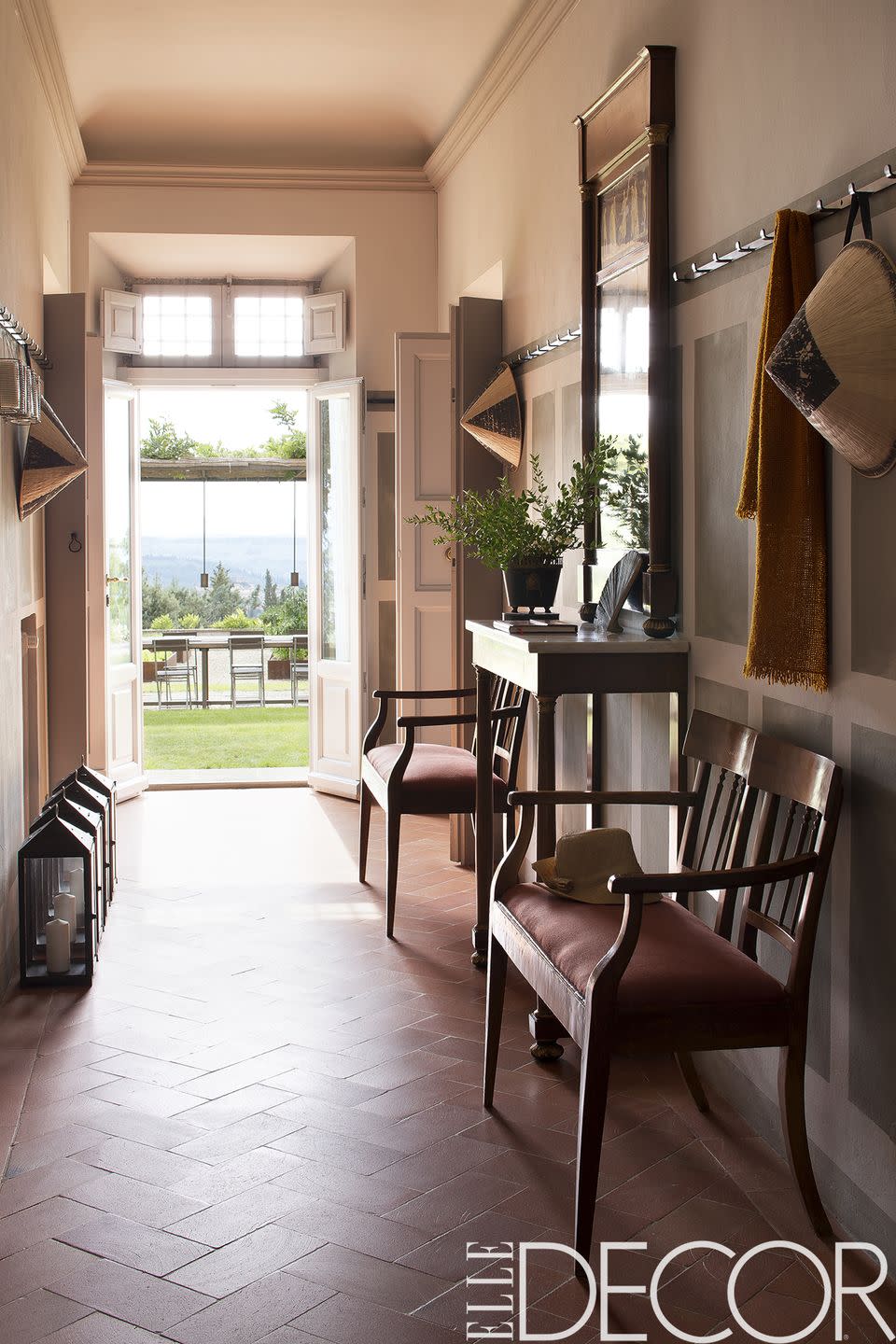
In the entry hall, the 19th-century Tuscan furnishings include a console and benches with seats upholstered in an Ian Mankin fabric; the flooring is terra-cotta tile from the town of Impruneta.
To furnish the rooms, the designer culled from her grandparents’ vast trove of antiques. En masse, the pieces could not have looked more traditional. But Miani whittled down the collection to just the essentials — the entrance, for instance, holds only a tall console flanked by a pair of slender benches whose cushions are upholstered in a rose brown to match the terracotta flooring. “We were all very attached to the furniture,” she recalls. “It’s still livable, even if it’s antique.”
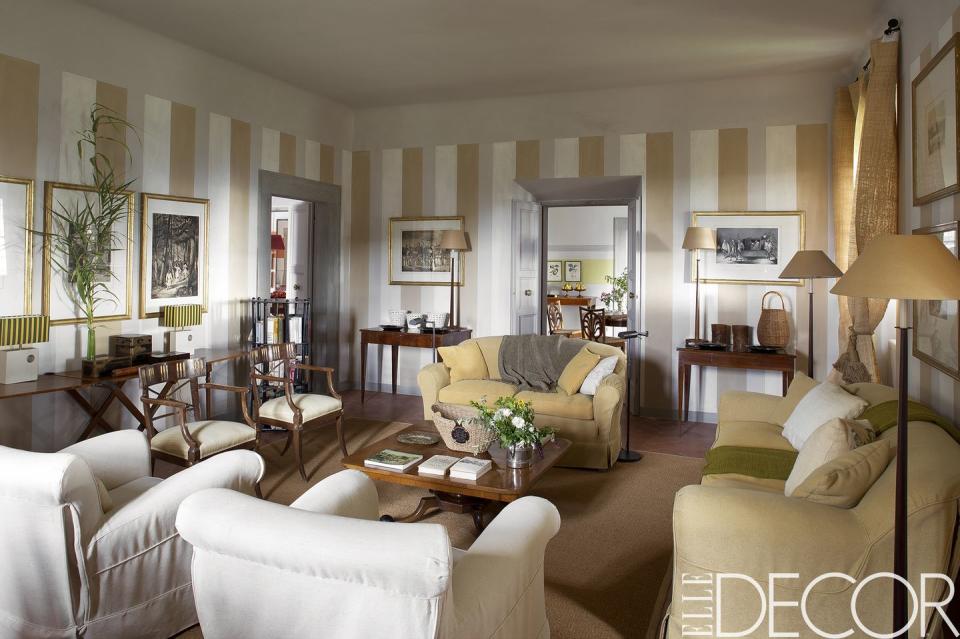
A pair of 18th-century inlaid Tuscan tables flanks a doorway in a sitting room; the wooden armchairs are 18th-century Venetian, the floor lamps and straw curtains are by Ilaria Miani and the 19th-century lithographs depict scenes of India.
And by grouping her relatives’ artworks together in a thematic way — a sitting room’s 49 antique etchings hang as one big installation, like “a Grand Tour of Italy,” she says — Miani has created her trademark sense of drama. “In the beginning it was quite a shock for our mother,” Miani admits. “Nothing is ever really new, but how you put it together is very personal.”
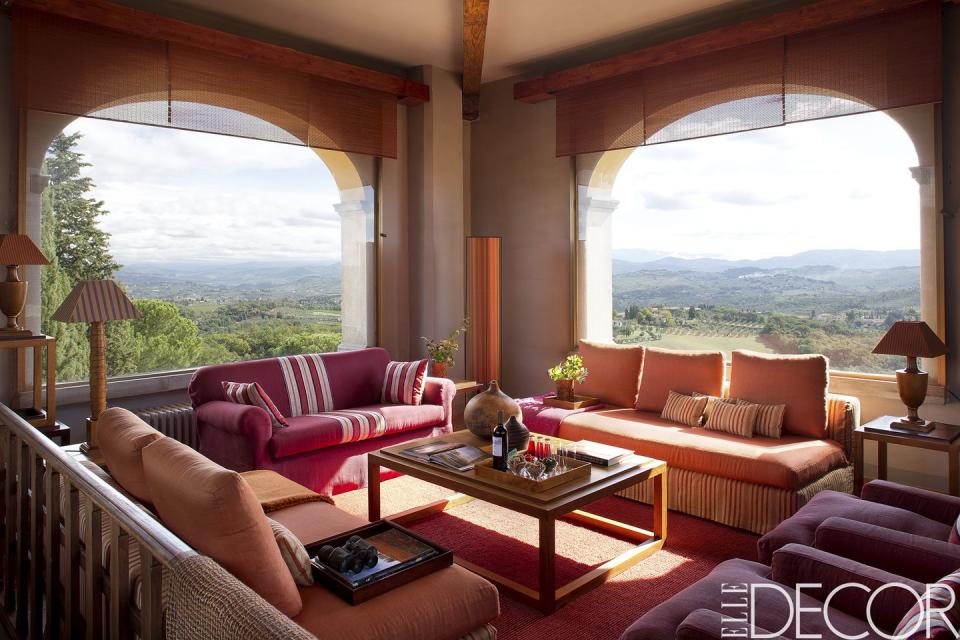
At the top of the tower, with 360-degree views of the Apennine Mountains, a living room contains a vintage sofa and custom daybeds covered in fabrics by C&C Milano. The motorized shades are bamboo, and the cocktail and side tables are Miani designs.
After 50 years, the villa’s grounds needed just as much attention. Trees and bushes were pruned to revive an elegant outdoor theater, dining terraces were added to take advantage of those wraparound views and 35 acres are now devoted to the family’s 700 olive trees, which produce an award-winning oil. Valentina oversees the garden, where she grows fragrant English roses along with enough produce to feed the family without ever going grocery shopping.
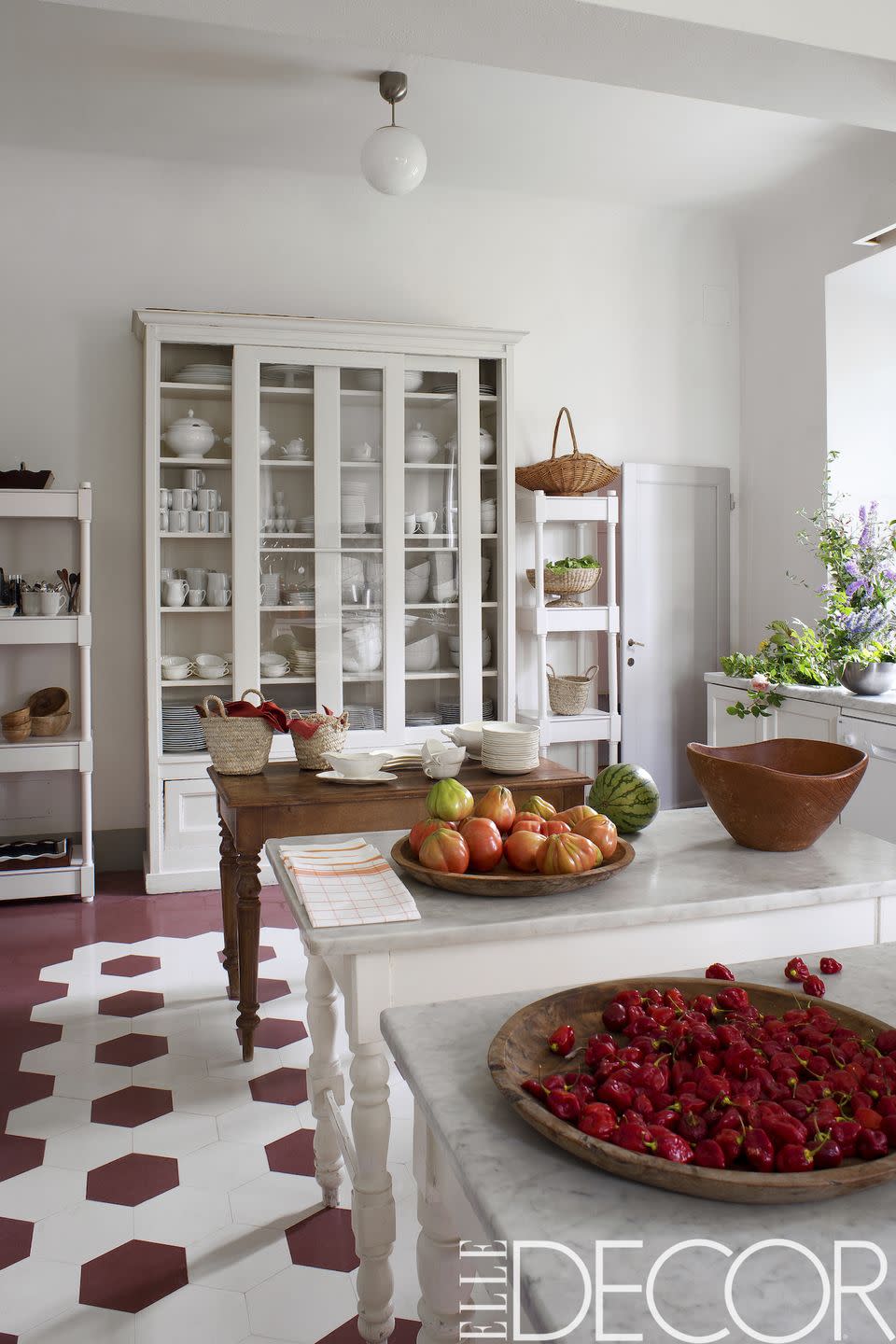
The kitchen cupboard and marble-topped Tuscan tables are 19th-century and the flooring is handmade cement tile from Florence.
She is developing a line of soaps and cosmetics (called, naturally, Tavernaccia), as well as a scent, with the help of a Florentine perfumer. Like his grandparents before him, Carlo Pallavicino is once again eating fresh eggs from his own chickens, which are as Italian as they get at this flourishing Florentine villa. “The gardener tells me that their favorite food is pizza from a local restaurant,” he says with a laugh. “Whatever pizza scraps are left over, that’s what the chickens like to eat best.”
This story was originally published in the April 2017 issue of ELLE DECOR.
You Might Also Like

